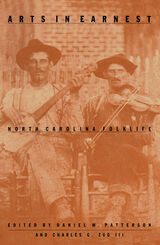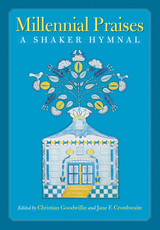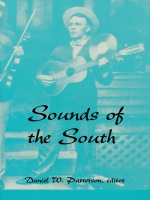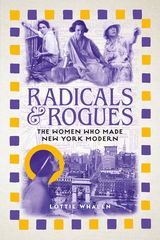3 books about Patterson, Daniel W.

Arts in Earnest
North Carolina Folklife
Daniel W. Patterson and Charles G. Zugg, III, eds.
Duke University Press, 1990
Arts in Earnest explores the unique folklife of North Carolina from ruddy ducks to pranks in the mill. Traversing from Murphy to Manteo, these fifteen essays demonstrate the importance of North Carolina’s continually changing folklife. From decoy carving along the coast, to the music of tobacco chants and the blues of the Piedmont, to the Jack tales of the mountains, Arts in Earnest reflects the story of a people negotiating their rapidly changing social and economic environment.
Personal interviews are an important element in the book. Laura Lee, an elderly black woman from Chatham County, describes the quilts she made from funeral flower ribbons; witnesses and friends each remember varying details of the Duke University football player who single-handedly vanquished a gang of would-be muggers; Clyde Jones leads a safari through his backyard, which is filled with animals made of wood and cement that represent nontraditional folk art; the songs and sermon of a Primitive Baptist service flow together as one—“it tills you up all over”; Durham bluesman Willie Trice, one of a handful of Durham musicians who recorded in the 1930s and early 1940s, remembers when the active tobacco warehouses offered ready audiences—“They’d tip us a heap of change to play some music”; and Goldsboro tobacco auctioneer H. L. “Speed” Riggs chants 460 words per minute, five to six times faster than a normal conversational rate.
Personal interviews are an important element in the book. Laura Lee, an elderly black woman from Chatham County, describes the quilts she made from funeral flower ribbons; witnesses and friends each remember varying details of the Duke University football player who single-handedly vanquished a gang of would-be muggers; Clyde Jones leads a safari through his backyard, which is filled with animals made of wood and cement that represent nontraditional folk art; the songs and sermon of a Primitive Baptist service flow together as one—“it tills you up all over”; Durham bluesman Willie Trice, one of a handful of Durham musicians who recorded in the 1930s and early 1940s, remembers when the active tobacco warehouses offered ready audiences—“They’d tip us a heap of change to play some music”; and Goldsboro tobacco auctioneer H. L. “Speed” Riggs chants 460 words per minute, five to six times faster than a normal conversational rate.
[more]

Millennial Praises
A Shaker Hymnal
Christian Goodwillie
University of Massachusetts Press, 2009
From the very beginning in the 1770s, singing was an important part of the worship services of the Shakers, formally known as the United Society of Believers in Christ's Second Appearing. Yet until the early nineteenth century, nearly all Shaker songs were wordless—expressed in unknown tongues or as enthusiastic vocalizations. Only when Shaker missionaries moved west into Ohio and Kentucky did they begin composing hymn texts, chiefly as a means of conveying the sect's unconventional religious ideas to new converts. In 1812–13, the Shakers published their first hymnal. This venture, titled Millennial Praises, included the texts without music for one hundred and forty hymns and elucidated the radical and feminist theology of the Shakers, neatly distilled in verse. This scholarly edition of the hymnal joins the texts to original Shaker tunes for the first time. One hundred and twenty-six of the tunes preserved in the Society's manuscript hymnals have been transcribed from Shaker musical notation into modern standard notation, thus opening this important religious and folk repertoire to modern scholars. Many texts are presented with a wide range of variant tunes from Shaker communities in New England, New York, Ohio, and Kentucky. Introductory essays by volume editors Christian Goodwillie and Jane F. Crosthwaite place Millennial Praises in the context of Shaker history and offer a thorough explication of the Society's theology. They track the use of the hymnal from the point of publication up to the present day, beginning with the use of the hymns by both Shaker missionaries and anti-Shaker apostates and ending with the current use of the hymns by the last remaining Shaker family at Sabbathday Lake, Maine. The volume includes a CD of historical recordings of six Shaker songs by Brother Ricardo Belden, the last member of the Society at Hancock Shaker Village.
[more]

Sounds of the South
Daniel W. Patterson, ed.
Duke University Press, 1991
Beyond the familiar forms of Mississippi Delta Blues and mainstream country music, the vernacular music of the South also ranges from the ceremonial music of Native Americans, to "shout" singing in South Carolina sea islands, Cajun fiddling, and Mexican-American conjunto music. Sounds of the South assesses past efforts to document these richly varied musical forms and the challenges facing future work.
"Sounds of the South"—a 1989 conference that gathered record collectors, folklorists, musicians, record producers, librarians, archivists, and traditional music lovers—celebrated the official opening of the Southern Folklife Collection with the John Edwards Memorial Collection at the library of the University of North Carolina, Chapel Hill. Based on that conference, Sounds of the South includes Bill Malone's account of his own career as fan and scholar of country music, Paul Oliver on European blues scholarship, and Ray Funk on researching Black Gospel Quartets.
The contributors look at a number of topics related to the role of the archivist/folklorist in recording and documenting the music of the South—evaluating past fieldwork and current needs in documentation, archival issues, prospects for the publication of recordings, and changes in music and technology. Written in an accessible style, this volume will be of interest to all those concerned with preserving the music of the American South.
"Sounds of the South"—a 1989 conference that gathered record collectors, folklorists, musicians, record producers, librarians, archivists, and traditional music lovers—celebrated the official opening of the Southern Folklife Collection with the John Edwards Memorial Collection at the library of the University of North Carolina, Chapel Hill. Based on that conference, Sounds of the South includes Bill Malone's account of his own career as fan and scholar of country music, Paul Oliver on European blues scholarship, and Ray Funk on researching Black Gospel Quartets.
The contributors look at a number of topics related to the role of the archivist/folklorist in recording and documenting the music of the South—evaluating past fieldwork and current needs in documentation, archival issues, prospects for the publication of recordings, and changes in music and technology. Written in an accessible style, this volume will be of interest to all those concerned with preserving the music of the American South.
[more]
READERS
Browse our collection.
PUBLISHERS
See BiblioVault's publisher services.
STUDENT SERVICES
Files for college accessibility offices.
UChicago Accessibility Resources
home | accessibility | search | about | contact us
BiblioVault ® 2001 - 2024
The University of Chicago Press









